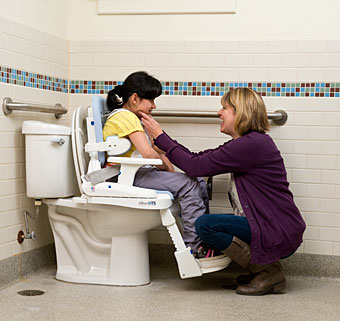
Toilet training is complex for every child. It requires maturity in motor and cognitive areas as well as emotional readiness. It combines the organization and understanding of bodily sensations with communication, motor planning, and timely task performance. As a result, parents are often anxious about toilet training. Fortunately, the scope of toileting methods is broad and there is lots of good advice available, so most parents eventually discover a method that works for their child.
The story is different—and often bleak—for parents of children with special needs and disabilities. Toilet training in this population is atypical, unpredictable, and time-consuming; no single method is tried and true. Even so, regardless of the toilet training method used, certain strategies can help improve results, including the often-overlooked strategy of using prompts. I have prepared a white paper on this topic titled Using Prompts to Improve Toilet Training for Children with Physical Disabilities. In it I’ve tried to describe the effective use of prompts to shape behaviors and function during the toileting process as a method towards better toilet training outcomes in children with physical disabilities. I hope you’ll find it helpful.